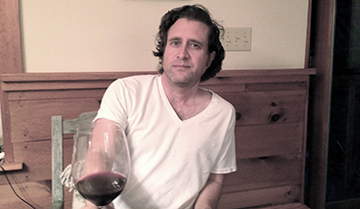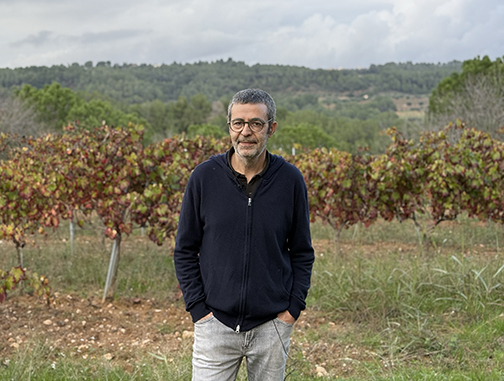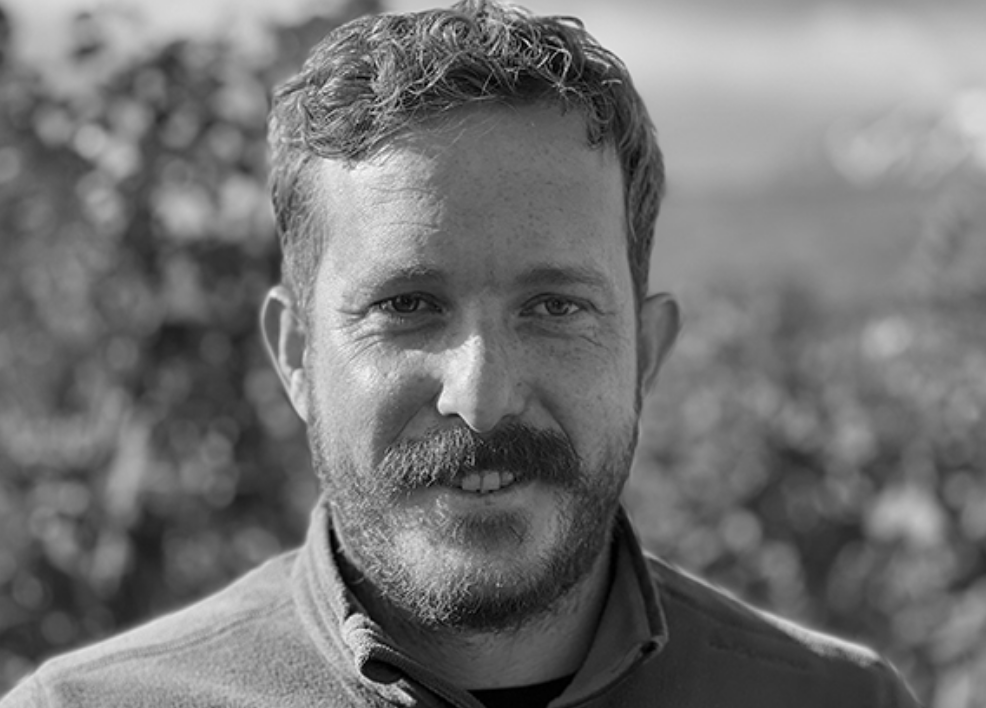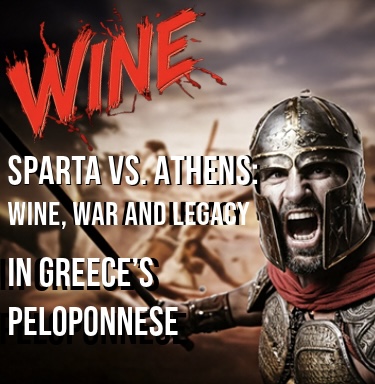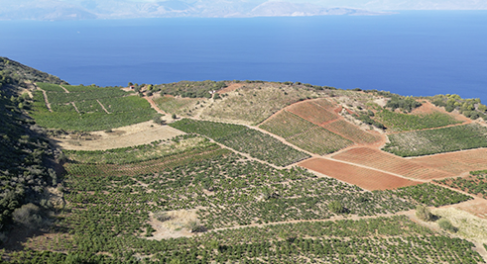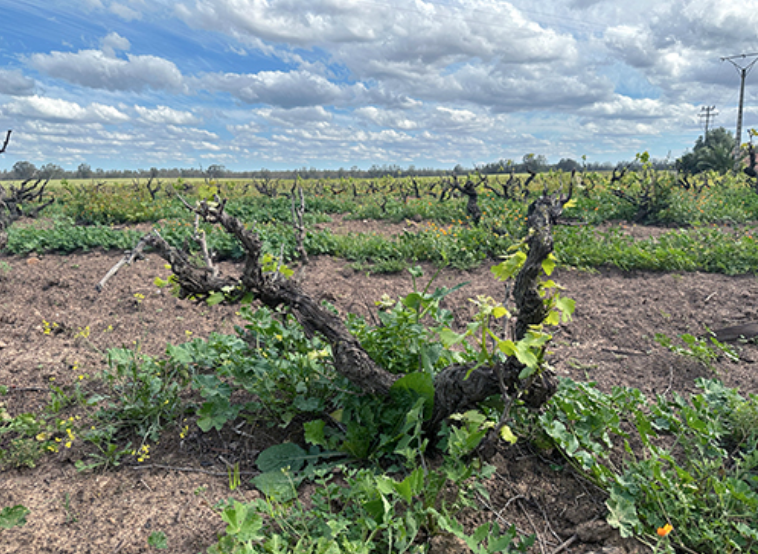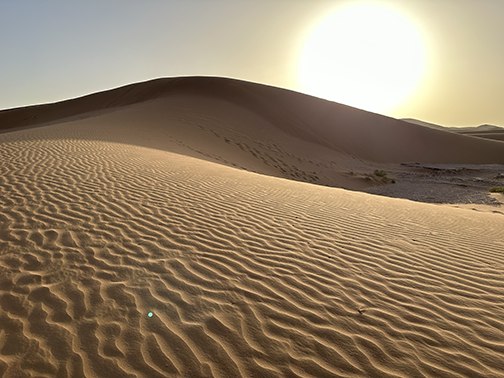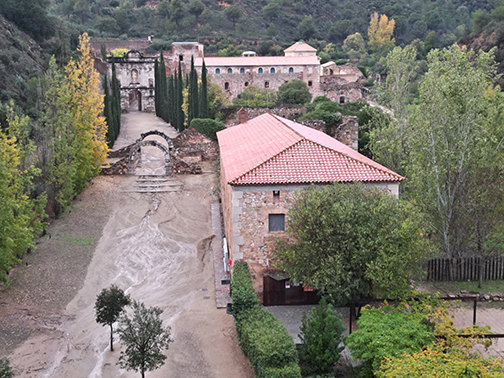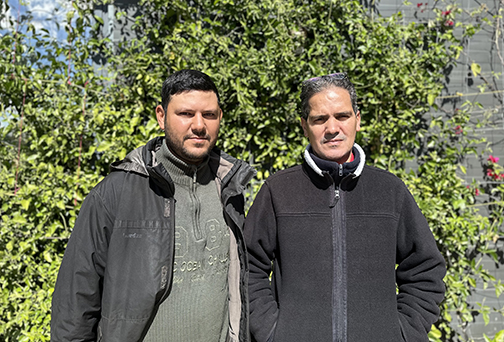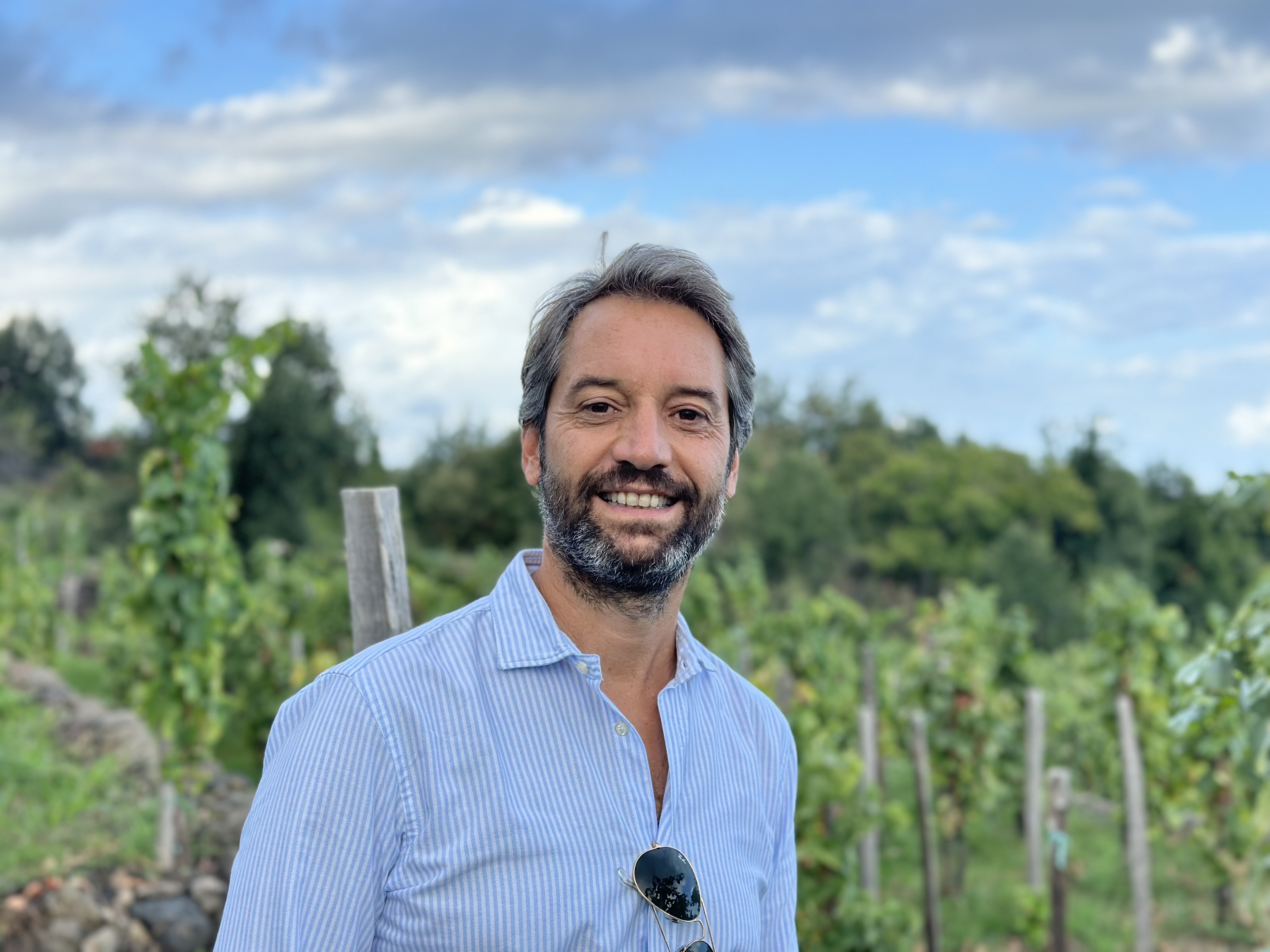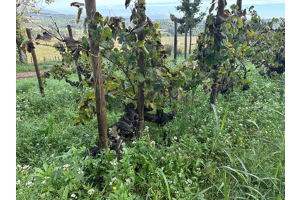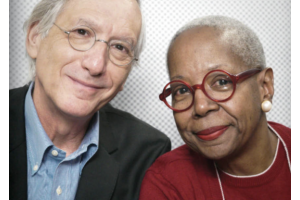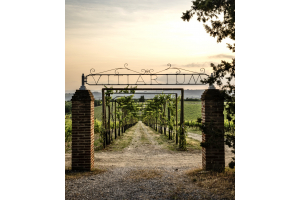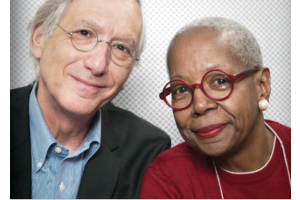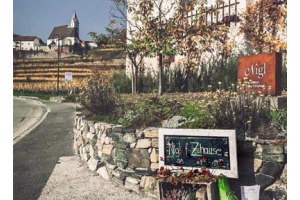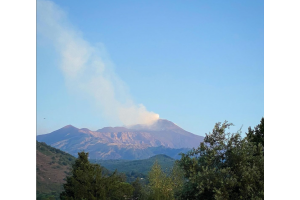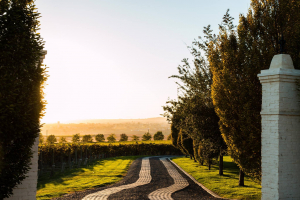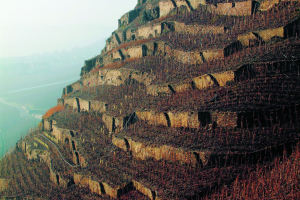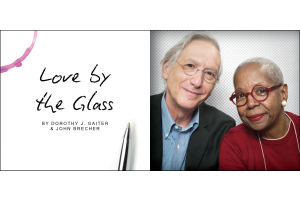Beneath the harmonious façade of Spain's wine industry lies a complex interplay between Catalan regional identity and Spanish national interests, with historical tensions occasionally surfacing through cultural expressions, marketing choices, and even export strategies.
Christopher Barnes
Nestled between the Mediterranean Sea and the dramatic...
- March 25, 2025
Grape Collective speaks to winemaker Benedetto Alessandro about his experiences on Etna. In addition to his involvement with Generazione Alessandro, he co-owns a winery, Monteleone, on Etna with his wife Giulia Monteleone.
The contrasting approaches to wine in Athens and Sparta offer a metaphor for their broader cultural differences and ultimate historical trajectories. Athens' balanced approach to wine consumption - enjoying its pleasures while tempering them with moderation and using them as a catalyst for intellectual exchange - created a legacy that transcended its political decline. Sparta's rigid control of wine consumption paralleled a societal inflexibility that brought short-term military success but long-term cultural stagnation.
- March 15, 2025
We sat down with Vasso Ligdopoulos and winemaker Panayiotis Papagiannopoulos to explore their family's wine journey.
- March 01, 2025
“...
- February 26, 2025
La Ferme Rouge has emerged as one of Morocco's most innovative and respected wineries. At the helm of this viticultural renaissance stands Jacques Poulain, one of the key figures behind the modern wine revival in Morocco.
While Morocco might not be the first country that comes to mind when thinking of fine wine, Poulain has spent the last decade challenging preconceptions and crafting bottles that speak eloquently of place—wines that balance Moroccan sunshine and minerality with European precision and finesse.
Grape Collective talked with Poulain about the challenges and rewards of winemaking in an emerging region, the influence of Morocco's cultural tapestry on his craft, and his vision for the future of Moroccan wine on the global stage.
Christopher Barnes: Talk about your wine journey. How did you find yourself making wine in Morocco?
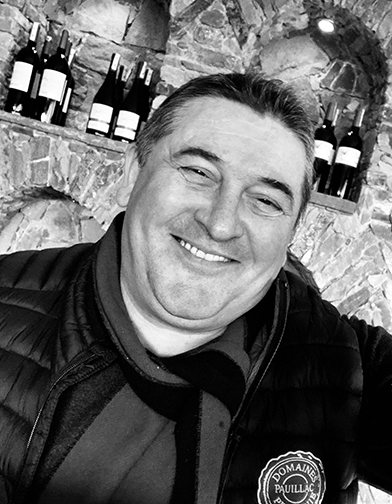 Jacques Poulain: My name is Jacques Poulain, and I am a winemaker. I come from the Bordelais region in the southwest of France. I worked for ten years as a winemaker in that region before deciding, in 1997, to move permanently to Morocco. Initially, I worked as the technical director at Domaine Ouled Thaleb, located in the coastal region of Benziman, between Casablanca and Rabat.
Jacques Poulain: My name is Jacques Poulain, and I am a winemaker. I come from the Bordelais region in the southwest of France. I worked for ten years as a winemaker in that region before deciding, in 1997, to move permanently to Morocco. Initially, I worked as the technical director at Domaine Ouled Thaleb, located in the coastal region of Benziman, between Casablanca and Rabat.My first mission there was to collaborate with local landowners and create partnerships. This involved identifying land that had previously been cultivated and reestablishing its potential. While exploring this area, about 70 kilometers from Benziman, I discovered an exceptional terroir that I deeply believed in.
I contributed by advising on grape varieties, recommending cultivation methods, and encouraging Moroccan landowners to replant vineyards, particularly in the Aïr region. I supported them technically and helped add value to their grapes by purchasing their harvests and transforming them into high-quality wines, which I brought back to Benziman to produce into a "cru." During this time, I met someone with whom, in 2009, I had the opportunity to establish La Ferme Rouge. The journey began in 1998 with the replanting of the vineyard, and La Ferme Rouge was officially created in 2009.
It’s important to acknowledge the property's history. There was an old, ruined wine cellar that still existed—an inheritance from settlers who had left Morocco in the 1970s. Amine’s family acquired the property when the settlers departed. For a time, the surrounding lands were managed by the state, which later chose to reprivatize them in the 2000s. La Ferme Rouge, originally known as Domaine de la Jacqueline, rented five domains adjacent to the family property from the estate. Rehabilitation of the site began in March 2009, and our first harvest took place on September 2, 2009.
Our cornerstone wines at La Ferme Rouge are Terre Blanche and Terre Rouge. These wines represent our origins and are deeply tied to the history of La Ferme Rouge.
Talk about the history of wine in Morocco.
Morocco has a rich viticultural heritage dating back to antiquity, with vineyards cultivated and traded by the Phoenicians, Greeks, and Romans. Despite being part of a Mediterranean tradition, Morocco’s viticulture developed significantly during the colonial era due to the destruction of French vineyards by phylloxera.
During the Napoleonic era, French settlers introduced vineyards to North Africa, including Algeria, Tunisia, and Morocco, to replace the wine production lost in France. These wines, known as "medicine wines," were robust, high in alcohol, and used to support French wines, especially during times of need, such as for soldiers.
After decolonization, however, the vineyards were neglected, and production dwindled significantly compared to the volumes of the 1950s and ‘60s. Today, only a fraction of that output remains. In a sense, we are among the "last Mohicans" of Moroccan viticulture, but for the past 25 years, we have been contributing to its revival.
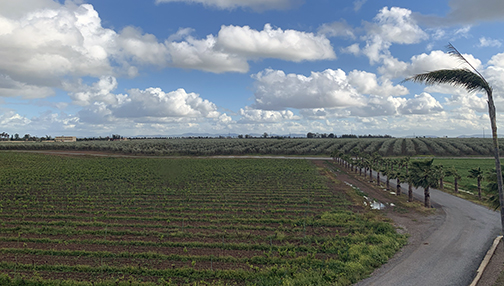 What grapes do you work with at La Ferme Rouge?
What grapes do you work with at La Ferme Rouge?At La Ferme Rouge, we grow grape varieties that are commonly planted in Europe, particularly in France. Traditionally, at the ancestral level here, we planted Cinsault, Grenache, Carignan, and Alicante Bouschet. In the older parts of the vineyard, spanning about 70 hectares and nearly 80 years old, we still have old vines of Cinsault, Grenache, and Carignan. However, we no longer grow Alicante Bouschet.
Since 1998, I have been replanting the more modern parts of the vineyard. For white grape varieties, we cultivate Chardonnay, Sauvignon, Colombard, Viognier, and Gros Manseng.
As for red varieties, that’s an area I particularly enjoy working in. While I was working in Bordeaux, I didn’t have the opportunity to work with Syrah, a grape I’ve always admired. I’ve loved tasting Syrah, especially in Côte du Rhône wines, and it was a fantastic discovery for me to grow it here. Syrah adapts beautifully to our climatic conditions and terroirs at La Ferme Rouge. In addition to Syrah, we also grow Tempranillo, a well-known Spanish variety renowned for its drought resistance, as well as Cabernet Sauvignon. We don’t grow Merlot or Pinot Noir because the climate here is far too hot for those varieties. Other red grapes we cultivate include Carignan, Cinsault, and Grenache, which we primarily use for rosés and gris. We also grow unique varieties such as Caladoc, Arinarnoa, and a small amount of Marselan. Additionally, we produce Tannat, Malbec, and a little Petit Verdot.
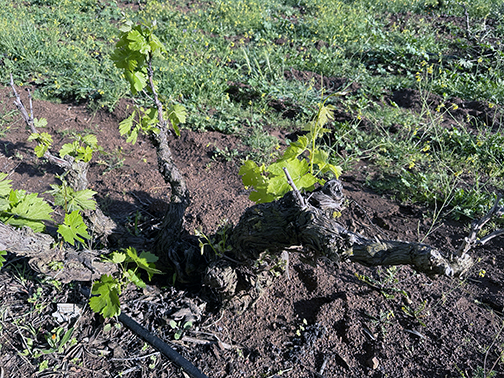 Talk about the terroir at the estate.
Talk about the terroir at the estate.Regarding the terroirs, we have two primary types, both with Moroccan names. There’s black clay, located on one side of the road, and red clay, found on the westernmost part of the estate. We also have limestone sands and limestone clay. In some areas, especially near the valley, there are blocks of cracked limestone. The subsoils are mainly schist and granite, with some gallets (rounded pebbles).
The terrain here is undulating, similar to Médoc vineyards, which allows for good drainage. These conditions contribute significantly to the character of our wines.
The white wines we produce are very mineral-driven, with exceptional freshness and salinity. They are refreshing, sapid wines that reflect the unique qualities of our terroir.
For reds, the market has shifted over the past 25 years. There used to be a preference for heavily oaked wines with powerful Cabernet Sauvignon that required long aging. Now, consumers want reds that are approachable, fruity, and enjoyable immediately, yet capable of some aging. We aim for balance, creating wines that are both accessible and refined.
La Ferme Rouge is a truly exceptional terroir. When you visit Morocco and explore other vineyards, you’ll notice the constant wind we receive from the Atlantic Ocean, which greatly influences the final expression of our wines. Working with this terroir is fascinating and deeply fulfilling for me. My connection to the vineyard is passionate and personal—I can’t imagine doing anything else.
Beyond wine, we also produce olive oil. Our estate includes 286 hectares of vineyards and about 300 hectares of olive groves. We create three types of olive oil, and it’s fascinating to transition from pressing grapes to pressing olives as the seasons change. This dual focus on wine and olive oil production keeps our work dynamic and rooted in tradition, allowing us to showcase the richness of our land in multiple ways.
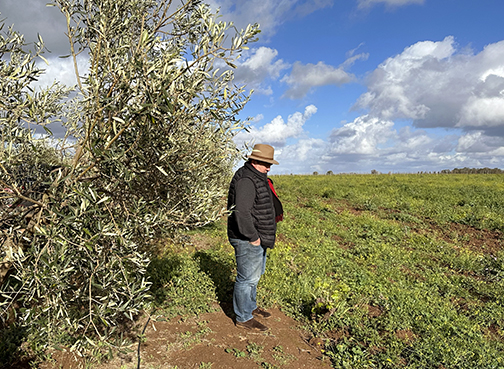 How is it making wine in a Muslim country?
How is it making wine in a Muslim country?Well, to answer this question, which is a bit delicate, there’s a common perception among tourists. They often wonder, “Morocco is a Muslim country—how is it possible to produce wine there? How do you get authorization?” Typically, in Muslim countries, drinking is forbidden. People are curious and often surprised to learn that wine is produced here. In fact, wine production is not forbidden in Morocco. For example, wine is also produced in Tunisia and Algeria. But here, if you want to invest in a vineyard, you need the means and opportunity to do so. Unlike Europe, we don't have subsidies for planting or harvesting. None of that exists here.
The costs of production are as high—if not higher—than in France. People often ask, "What about labor?" Labor costs, while lower than in France, present challenges. Although the minimum wage has risen over the years, there is a lack of qualified workers. For example, a technician trained in oenology at a school in Bordeaux comes with technical expertise and a different cultural approach. Here, viticulture isn’t a cultural norm, and there are no specialized schools for it. While there are agricultural and engineering schools, their focus on viticulture and winemaking is minimal. This lack of training means we must train our workers ourselves, which is a significant investment of time and resources. In France, one qualified technician could handle a role efficiently. Here, I might need five workers to perform the same tasks. This reliance on untrained labor increases costs, even if individual wages are lower. As for subsidies, there are limited options. Occasionally, there are small subsidies for specific projects, such as installing drip irrigation systems, but nothing comparable to the support available in Europe.
Tourists are among the main consumers of the wine we produce. Distribution here includes direct sales, wine shops, neighborhood spice shops, cafes, hotels, and restaurants. There’s also the GMS (Grandes et Moyennes Surfaces), or large retail outlets. It’s a fairly standard market structure, similar to other countries. Not everyone in Morocco drinks wine, of course, but the country is quite open-minded. Moroccans are naturally curious and welcoming people. This openness creates a certain tolerance for activities like winemaking.
Regarding the impact of Ferme Rouge on its environment, the social aspect is crucial. For our village, our presence has been transformative. We do everything by hand—no chemical weeding. All the weeds under the rows are removed manually. We employ many women because they are hardworking, careful, and deeply involved. While men typically take on roles like carpentry, tractor operation, or working in the cellar, the women handle tasks like weeding and maintaining the vineyard. Their contributions are invaluable.
La Ferme Rouge has grown, and so has the village around it. This mutual growth underscores the importance of our human impact. It’s not just about producing wine but creating a community and a sustainable way of working.
...
- February 12, 2025
Grape Collective talks with winemaker Saïd Ouhmad and agronomist Yassine Dahouri of Domaine de Baccari about winemaking in Morocco.
- January 04, 2025
Salvino Benanti talks to Grape Collective about the challenges and rewards of winemaking on an active volcano. He shares the stories behind Benanti Winery’s origins, discusses the region’s unique winemaking history, and reflects on the emotional connection between the winemaker and the volcano.
